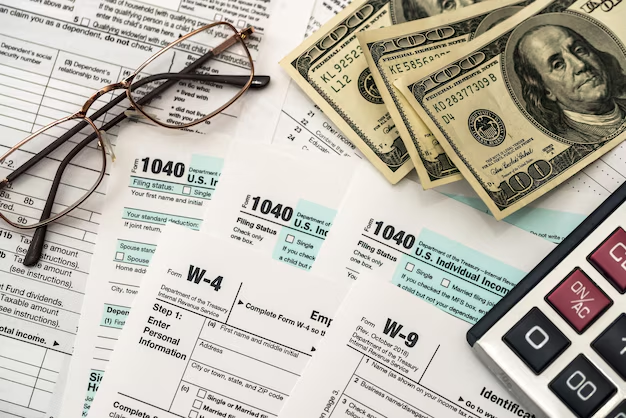Understanding Qualified Dividend Income: A Comprehensive Guide for Investors
When it comes to investing, dividends represent a substantial benefit, providing earnings to shareholders even amidst fluctuating stock markets. However, not all dividends are created equal. Among them, qualified dividend income stands out as particularly advantageous for investors. In this guide, we unravel what qualifies a dividend as "qualified," why it matters for your portfolio, and explore related facets that every savvy investor should understand.
📊 What Are Qualified Dividends?
Qualified dividends are a subset of dividend income that are taxed at the lower capital gains tax rates rather than ordinary income tax rates. This favorable tax treatment can mean significant savings for investors, especially those in higher tax brackets.
Key Characteristics of Qualified Dividends:
- Source: Must be paid by a U.S. corporation or a qualified foreign corporation.
- Holding Period: To qualify for the favorable tax rate, investors must hold the dividend-paying stock for more than 60 days during the 121-day period beginning 60 days before the ex-dividend date.
Why This Matters: By meeting these criteria, qualified dividends reduce the tax burden, enhancing the overall return on investment.
💡 Understanding the Tax Benefits
Capital Gains Tax Rates
Qualified dividends are taxed at the more favorable long-term capital gains rates, which are lower compared to ordinary income rates. For instance:
- 0% for individuals in the lower tax brackets
- 15% for individuals in the middle brackets
- 20% for those in the highest tax brackets
This means that if you're a high-income earner, you might pay significantly less on your qualified dividends compared to your ordinary income.
Example Scenario
Consider an investor receiving $1,000 in dividends. If these qualify as qualified dividends, and they are in the 15% capital gains bracket, they owe $150 in taxes. Conversely, taxed as ordinary income at, say, a 32% rate, they would owe $320. The difference can be sizable over time.
📚 How to Determine If Your Dividends Are Qualified
Determining whether dividends are qualified can be straightforward, but it requires attention to detail regarding:
- Company Type: Confirm the dividend comes from a qualified source.
- Hold Period: Check the holding period requirement against your purchase dates.
- IRS Declarations: Review statements and IRS guidelines for any exceptions or additional requirements.
Common Pitfalls
- Short Holding Periods: Selling the stock too soon might disqualify the dividends.
- Foreign Investments: Ensure foreign companies are within IRS reciprocity agreements.
Practical Tip: Regularly review financial statements or consult with a tax professional to ensure compliance and maximize tax efficiency.
🌍 The Role of Foreign Dividends
Many investors diversify portfolios globally, meaning foreign dividends might appear in your investment income. Understanding which foreign dividends qualify for favorable tax treatment requires knowledge of international tax treaties and specific IRS rules.
Foreign Qualifications
- Treaty-Based: Dividends from countries with reciprocity treaties with the U.S. often qualify.
- Complex Requirements: Each country can entail specific criteria beyond IRS guidelines.
Key Takeaway: Always verify whether foreign dividends qualify under IRS regulations, as taxation can vary significantly.
🔍 Qualified vs. Ordinary Dividends: How They Compare
Both ordinary and qualified dividends represent income to investors but differ in taxation and requirements.
| Feature | Qualified Dividends | Ordinary Dividends |
|---|---|---|
| Tax Treatment | Lower capital gains tax rates | Ordinary income tax rates |
| Holding Period | Requires a specific stock holding time | No holding period requirements |
| Source | U.S. corporations and some foreign | Any corporation distributing dividends |
Investment Impact: Preferential tax treatment makes qualified dividends more attractive for long-term, tax-efficient investing strategies.
🏦 Strategic Investment Planning with Dividends
Incorporating dividend income into your investment strategy requires aligning with financial goals, tax planning, and balance with other income forms.
Building A Diversified Portfolio
- Mix Asset Types: Include both dividend-paying and growth stocks.
- Consider Tax Implications: Factor in your tax bracket and optimize dividend types.
- Reinvest: Use dividend reinvestment plans (DRIPs) to compound earnings.
Long-Term Perspective: Leveraging qualified dividends can contribute substantially to portfolio growth through compounding and reduced tax liability.
📑 Summary Takeaways & Tips
- Check Eligibility: Regularly verify your dividends to ensure they qualify and comply with IRS regulations.
- 💰 Maximize Returns: Opt for investments with potential for qualified dividends to benefit from better tax rates.
- 📈 Holistic Strategy: Consider tax implications within the broader scope of your investment plan for optimal financial health.
Final Word: By understanding the ins and outs of qualified dividend income, investors can make informed decisions that advance financial goals while optimizing tax efficiency.
Understanding qualified dividends is integral to savvy investing. This guide provides the knowledge needed to make informed decisions, ensuring that your investments not only grow but also remain tax-efficient. By delving into the nuances of qualified dividends, you empower yourself to navigate the investment landscape with confidence.

Related Topics
- Are Etf Dividends Qualified
- Are Preferred Stock Dividends Qualified
- Are Qualified Dividends Included In Agi
- Are Qualified Dividends Included In Ordinary Dividends
- Are Qualified Dividends Taxable
- Are Reit Dividends Qualified
- Are Schd Dividends Qualified
- Do Ordinary Dividends Include Qualified Dividends
- Do Qualified Dividends Count As Income
- Do You Pay Georgia State Income Tax On Qualified Dividends